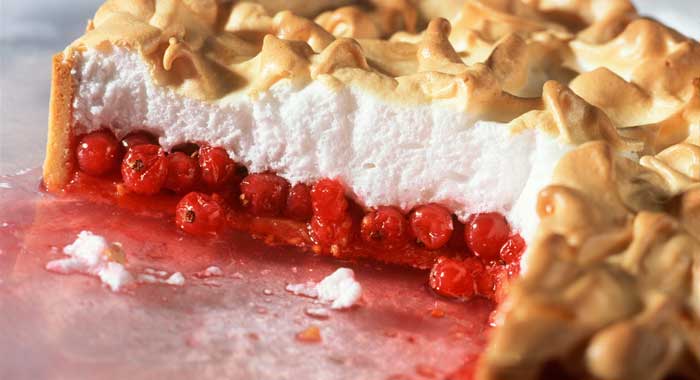
Pronounce it: red-cur-rant
These shiny little berries grow low on bushes, hanging from the branches like rows of miniature gems. Their flavour is a little tart but they’re still sweet enough to be eaten raw, so long as they’re sprinkled with plenty of sugar. They have a high vitamin C content, and go well with both other berries and fruits, such as raspberries, strawberries and melon, as well as goose, venison and lamb (hence the familiar lamb accompaniment, redcurrant jelly). They can also be frosted with egg white and caster sugar and used as a decoration for puddings or cocktails.
Availability
July through to early September.
Choose the best
Go for glossy, plump, firm currants. Avoid those that are squashed or mouldy.
Prepare it
Wash, then, holding the stalk over a bowl, grip it at one end and sweep a fork down its length, making sure that the stalk runs between the fork’s tines – all the berries should pop off. If you like, you can also remove the little brown tip at the base of each berry (just pinch it off between thumb and forefinger) but it’s a labour-intensive job and doesn’t make a huge difference to the flavour.
Store it
In the fridge, for up to three days. Don’t wash them before storing or they’ll go soggy.
Cook it
Poach (4 minutes, or until just starting to burst). Sprinkle with sugar and serve with cream. Use to make sauces, syrups and jams. Add to the fruit mix for summer pudding; use to make mousse or sorbets.
Alternatives
Try blackcurrant.
Be the first to comment on "Redcurrant"